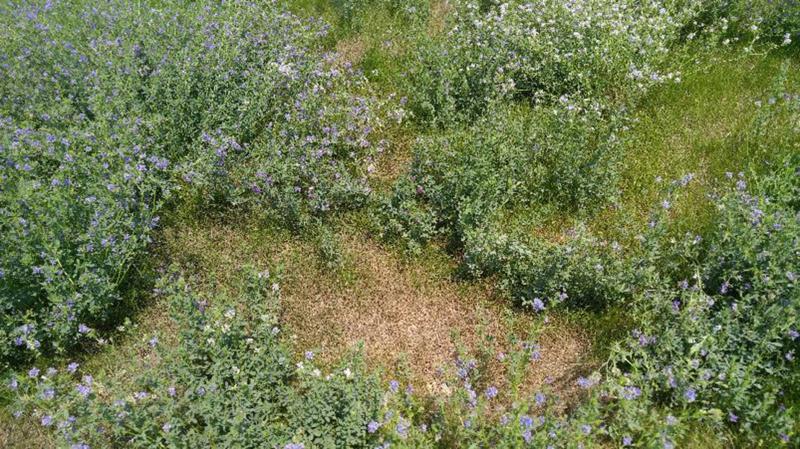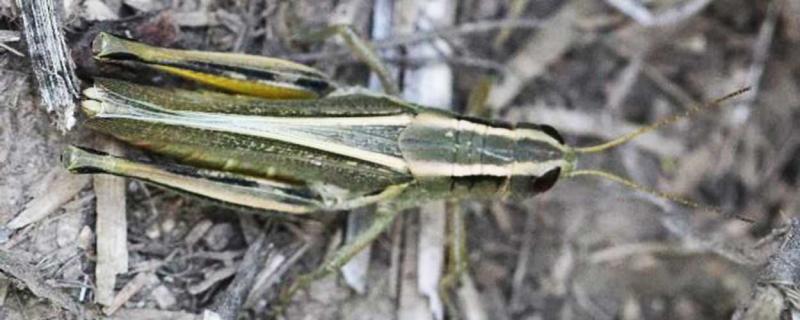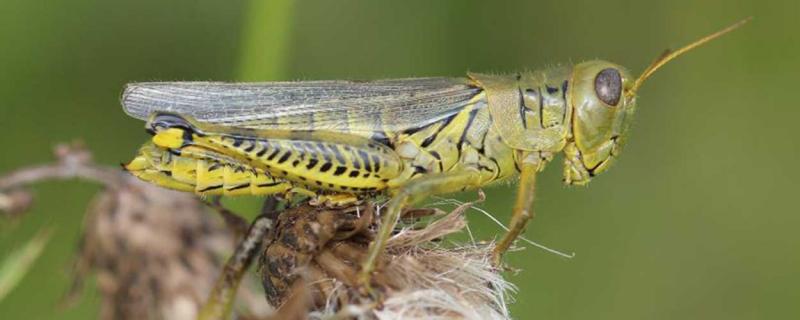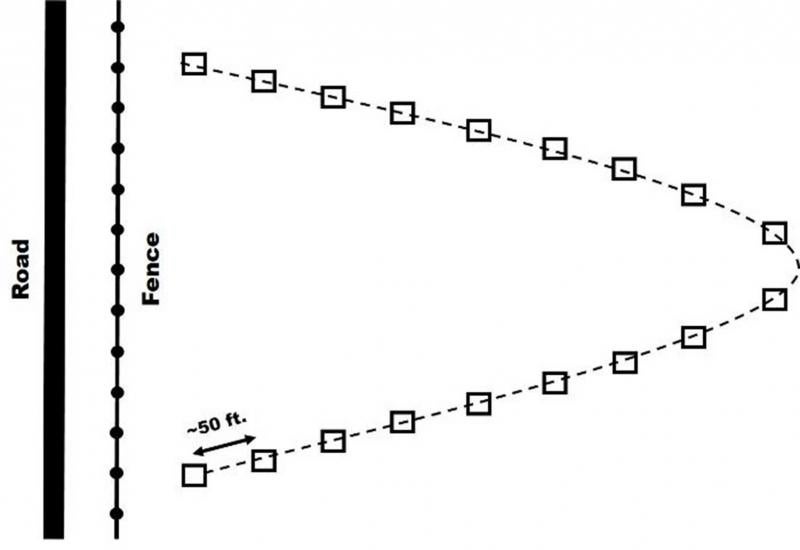
Written collaboratively by Adam Varenhorst, Amanda Bachmann, Philip Rozeboom, Ruth Beck and Patrick Wagner
Most of Eastern South Dakota is experiencing very low grasshopper populations. However, this is not the case for many areas in Central and Western South Dakota. In some areas, grasshoppers have been observed in pastures and field edges (Figure 1). However, the concern regarding large grasshopper populations is that they may cause economic loss in cash crops. Most years, grasshoppers pose little threat to crops, but when large populations are present, there is potential for yield loss to occur. At this point, even though grasshoppers haven’t been observed feeding extensively on crops, it is important to continue scouting areas with large grasshopper populations and monitor crops. Specifically, developing ears on corn should be monitored to ensure that silk clipping isn’t occurring, and developing pods on soybean should also be monitored.
Identification
There are three main species of grasshoppers that are being reported in the areas with large grasshopper populations. Of these three species, the most common, is the two-striped grasshoppers.

Two-Striped Grasshopper
Two-striped grasshoppers get their name because of the two light yellow lines that run on the back of their head to their abdomen where they converge near the middle of the wings. Two-striped grasshoppers are normally a tan to brown in color (Figure 2). They are approximately 1-1 ½ inches long.

Redlegged Grasshopper
Another grasshopper that has been reported is the redlegged grasshopper. These grasshoppers get their name from their red hind leg segment (Figure 3). Their bodies range in color from green to tan with black markings and they are 2/3 to 1 inch long.

Differential Grasshopper
The other large grasshoppers that are being reported are the differential grasshoppers. These vary in size from 1 1/8 to 1 ½ inches long. Their bodies are green to yellow in color and they have black chevron markings on their hind legs (Figure 4).
Scouting and Management Options

The two methods for determining if populations are at or above threshold are to use visual counts or a sweep net. For visual counts, estimate a square yard in front of you and count the number of grasshoppers jumping out of the area as you slowly walk towards it. For sweep netting, use a 15-inch diameter sweep net and capture grasshoppers in four pendulum swings (approximately one square yard of area) and count them. With either sampling method, we recommend repeating it several times in a pattern, such as the example in Figure 5, and calculating the average for increased accuracy.
The threshold for grasshopper populations that was established by the United States Department of Agriculture (USDA) for grasslands is 15-20 nymphs or 8-10 adults per square yard.
For crops, we recommend scouting for nymphs and adults both in field margins and within the fields. For field margins, management should be considered when nymph populations reach 50-75 per square yard and adult populations reach 21-40 per square yard. In the field, management should be considered when there are 30-45 nymphs per square yard or when there are 8-14 adults per square yard. If you observe silk feeding, or grasshoppers feeding on ear tips or developing kernels insecticide management should be considered. For soybean, if grasshoppers, along with other defoliators, cause 20% defoliation after flowering or are feeding on developing pods insecticide management should be considered.
If thresholds are exceeded, an insecticide that is labeled for grasshopper management may be considered. A current list of insecticide sprays for use in soybean, corn and alfalfa can be found in the latest South Dakota Pest Management Guides.
In pastures and range, spreading poison grasshopper baits or baits containing Nosema locusta spores may be used to reduce populations. If treating earlier in the season while grasshoppers are still growing, an insect growth regulator (IGR) containing diflubenzuron may be applied to inhibit grasshopper development. However, please note that IGRs have no effect on adult grasshoppers and should only be used to manage developing nymphs.

